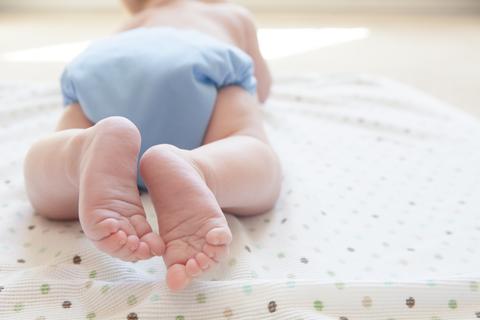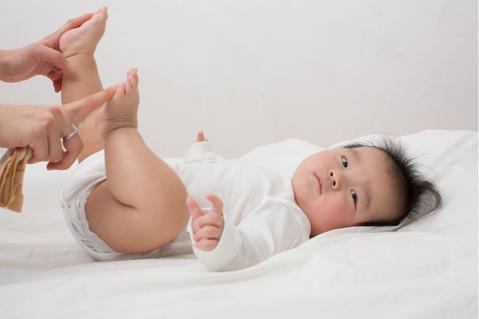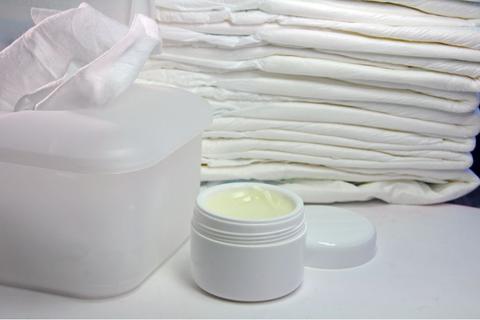By Vaishali Sudan Sharma
Diapers have become a necessity, but it does feel good to know a lot of moms now opt for cloth diapers. They are eco-friendly and gentle on a baby’s skin. However, back in the day, there weren’t many options. I (and my baby) had to deal with diaper rash. Research says that almost every baby is likely to develop diaper rash at least once during the first three years of life!
In this blog, I thought of sharing my own experience. It took time and research to educate myself. Yes! Do please not take diaper rash lightly. Sharing a list of do’s and don’ts so that you easily protect your little one’s supple skin from rashes developed from diapers.

At 3 months, my baby’s diaper rash wasn’t uncommon. Despite bathing nicely, drying the area, applying all sorts of creams, diaper rashes would be persistent. At the onset, I took it lightly, but when it started interfering with his day-to-day activities, I had to speak to my child’s pediatrician and my own grandma. They told me that diaper dermatitis is one of the most common skin problems in newborns and infants. The problem especially aggravates during monsoon months.
Why is diaper rash annoying?
It’s because if the problem aggravates, it tends to cause fever in babies. A diaper rash can get really bad if the area is affected by yeast or there’s an allergic reaction or a bacterial infection. Frequent bowel movements, constipation, or diarrhea may also cause diaper rash, as prolonged exposure to stool may irritate a baby’s skin.
How do you distinguish a common rash with a diaper rash?
- Redness in the areas where the diaper touches the skin
- Dryness or spots or blisters or peeling of skin in the diaper area
- Bright red patches in the diaper area

If the rash is of mild nature and you are experiencing it for the first time, here are 5 home remedies to treat it:
1. DIY diaper rash cream
Popular dadima ke nuskhe (Home remedy coming straight from our grandma’s kitchen): 1 cup coconut oil, 1 cup olive oil, 4 tablespoons beeswax (pastilles), 8 drops disinfecting lavender essential oil, 6 drops antiseptic lemon essential oil and 4 drops antifungal, antimicrobial tea tree essential oil.

How to make?
Instructions
In a medium glass bowl, add the coconut oil, olive oil, and beeswax. Place the bowl over a saucepan with some water or pop in the microwave. Heat until everything is in its liquid state. Now, remove from heat. Allow the liquid to cool for some time. Now, add a few drops of lavender, lemon, and tea tree oil.
Pour into a sterilized mason jar and allow to cool completely.
Pro-tip: Only scoop the rash cream out with a clean finger.
2. Use breast milk
Breastfeeding parents might already know that liquid gold does more than just nourish their little one’s tummy.
According to Dr. Himanshu Sharma, a Gurgaon-based pediatrician, “Breast milk has natural anti-infective properties and is loaded with antibodies. So, it is worth trying. Most parents have seen it works effectively.”
3. Olive oil
Dr. S. Daniel Ganjian, a pediatrician at Providence Saint John’s Health Center in Santa Monica, California, recommends parents use a mild cleanser, such as Cetaphil, after their baby’s bowel movements and plain water and cotton balls after wet diapers. But a soothing alternative can be olive oil, which possesses anti-inflammatory and antimicrobial properties.
Ganjian recommends this soothing protocol for irritant dermatitis diaper rash, as well as rash caused by allergic contact dermatitis.
4. Apply cornstarch
A lot of sources recommend using cornstarch to dry the baby’s bottom. What one must do is keep a container of cornstarch near your diaper changing area and apply it after using homemade diaper rash cream. Just be sure to keep cornstarch (or any powder) away from little lungs.
5. Consider coconut oil
This is what our grandparents did. They would slather generous layers of virgin/good quality coconut oils onto our skins- rashes or no rashes. Coconut oil works well because it is hydrating and soothing, in addition to providing a moderate amount of barrier protection, especially on a yeast causing rash.
If the rash is not resolving, I would recommend that parents speak to their child’s doctor and opt for bacterial ointment, antifungal cream, or even oral antibiotics.
Pro-tip: If using cloth diapers and washing them yourself, use very hot water and rinse several times to make sure all the detergent is removed. You could also sterilize them by boiling for 15 minutes after washing to make sure that all the germs are killed and all the soap is removed.
